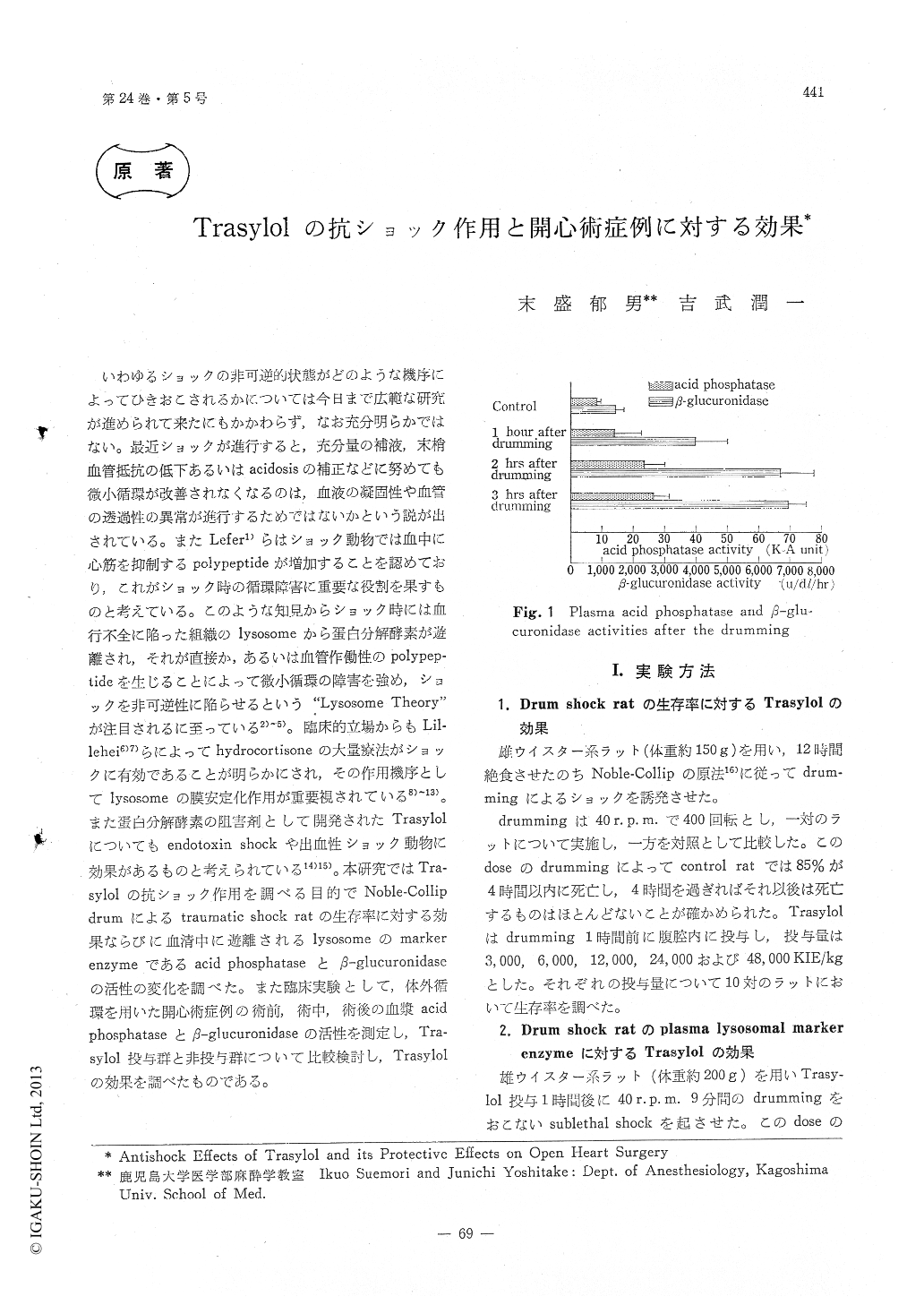Japanese
English
- 有料閲覧
- Abstract 文献概要
- 1ページ目 Look Inside
いわゆるショックの非可逆的状態がどのような機序によってひきおこされるかについては今日まで広範な研究が進められて来たにもかかわらず,なお充分明らかではない。最近ショックが進行すると,充分量の補液,末梢血管抵抗の低下あるいはacidosisの補正などに努めても微小循環が改善されなくなるのは,血液の凝固性や血管の透過性の異常が進行するためではないかという説が出されている。またLefer1)らはショック動物では血中に心筋を抑制するpolypeptideが増加することを認めており,これがショック時の循環障害に重要な役割を果すものと考えている。このような知見からショック時には血行不全に陥った組織のlysosomeから蛋白分解酵素が遊離され,それが直接か,あるいは血管作働性のpolypeptideを生じることによって微小循環の障害を強め,ショックを非可逆性に陥らせるという"Lysosome Theory"が注目されるに至っている2)〜5)。臨床的立場からもLillehei6)7)らによってhydrocortisoneの大量療法がショックに有効であることが明らかにされ,その作用機序としてlysosomeの膜安定化作用が重要視されている8)〜13)。
1) The survival rates of the rats subjected to the standardized Noble-Collip drum trauma was remarkably improved by Trasylol administration 1 hr prior to the initiation of drumming. The optimum therapeutic effect was obtained with the dose of 12, 000 KIE/kg of Trasylol.
2) The activities of plasma acid phosphatase and β-glucuronidase were elevated considerably in the rats subjected to drumming. The elevation in the activities of these enzymes were inhibited significantly with Trasylol treatment.

Copyright © 1976, Igaku-Shoin Ltd. All rights reserved.


